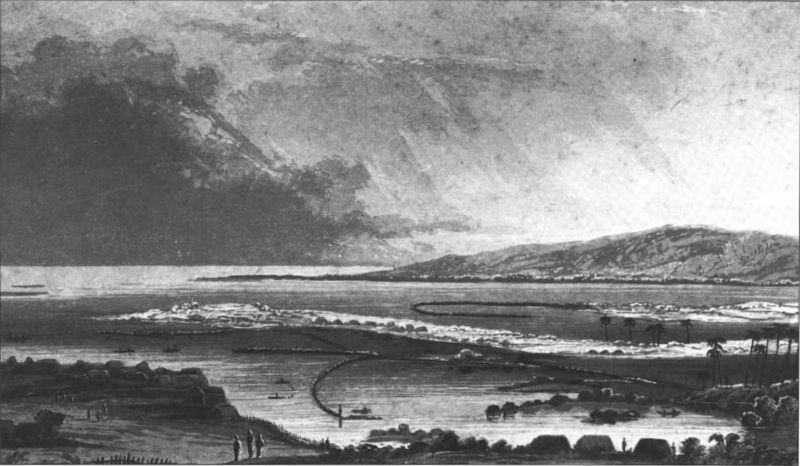Digital Collections
Celebrating the breadth and depth of Hawaiian knowledge. Amplifying Pacific voices of resiliency and hope. Recording the wisdom of past and present to help shape our future.
Nanea Armstrong-Wassel [Ho‘okahua]
The plain of Kaiwiʻula is located in the ahupuaʻa of Kapālama on Oʻahu. Although there is no known documentation explaining the source of the name Kaiwiʻula, which can be translated as “the red bone,” it is believed to commemorate a great battle that occured here and on the connecting plain of Niuhelewai.
The famous battle between Kahahawai, a chiefly warrior under Kahekili (aliʻi nui of Maui), and Kahahana (aliʻi nui of Oʻahu) ended in a slaughter of the Oʻahu people. It was said that so many were killed, the corpses completely dammed Niuhelewai stream. “Waipiʻo kīmōpō” (Waipiʻo of the secret rebellion) is an epithet for the people of Waipiʻo, Oʻahu who rebelled against the Maui chiefs and died at Niuhelewai.
Kamehameha ʻEkahi would also make a lasting mark on the lands of Kaiwiʻula and Niuhelewai. The history of his prudent and thoughtful leadership in these places reminds us of the connection between our schools, its namesake, and the ʻāina on which it was originally founded. Indeed, it was here that the Kamehameha School for Boys first opened in 1887, and it is here that the Bernice Pauahi Bishop Museum remains to this day.
After his victory in the battle of Nuʻuanu, Kamehameha moved quickly to restore the agricultural capacity of the lands that had been damaged as a result of the war. Areas within the ahupuaʻa of Kapālama and Nuʻuanu were chosen as his personal farm lands and were famed for their size, being likened to plantations. Kamehameha also initiated several large-scale planting efforts to not only provide food for his army, but to help return peace and stability to all of Oʻahu. One such effort was an island-wide tour by which his warriors would visit each community and provide the manpower needed to restore its food production.
Reverend Stephen L. Desha writes in Kamehameha and His Warrior Kekūhaupiʻo:
[Kamehameha] then inspired the idea of farming in order that there be abundance in the land and prosperity would return to the famous island of the royal sands of Kākuhihewa. He began his circuitous journey of Oʻahu on the west side, going from ʻEwa and from Waiʻanae, arriving at Waialua and turning along the Koʻolau cliffs.
However, before he began his journey, he commenced the planting of kalo at the place called Kapālama and Niuhelewai. He planted many kalo tops (huli kalo) in the kalo patches in which the kalo had been heedlessly pulled up during the time of war. In this he was greatly assisted by his warriors from Hawaiʻi. Not only did his warriors participate, but Kamehameha encouraged his aliʻi from Hawaiʻi to enter into this work of farming on the land over which they had triumphed.
Translated by Frances N. Frazier
It was the warrior Kekūhaupiʻo who is attributed to giving Kamehameha the following advice while teaching him:
ʻO ke aliʻi i lilo i ka leʻaleʻa a mālama ʻole i ke kanaka me ke kapu aku, ʻaʻole ia he aliʻi e kū ai i ka moku.
The chief who is taken with pleasure-seeking and cares not for the welfare of the people or the observation of the kapu of the gods is not a chief who will become a ruler.
#2451, Mary Kawena Pukui
This proverb has since become a famous ʻōlelo noʻeau that is offered to young people, imparting the knowledge that success comes not by seeking idle pleasure but by living up to one’s beliefs and caring for the welfare of others. This lesson undoubtedly shaped Kamehameha’s conception of the responsibilities of a good aliʻi and was reflected in his commitment to the restoration of Niuhelewai and Kaiwiʻula.

Photo Credit: Bishop Museum

Photo Credit: Dampier 1836
Niuhelewai fish ponds at Honolulu.